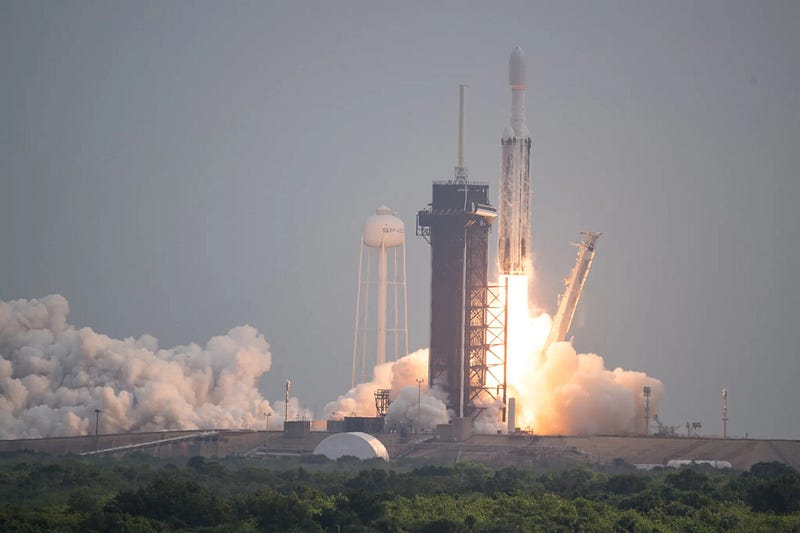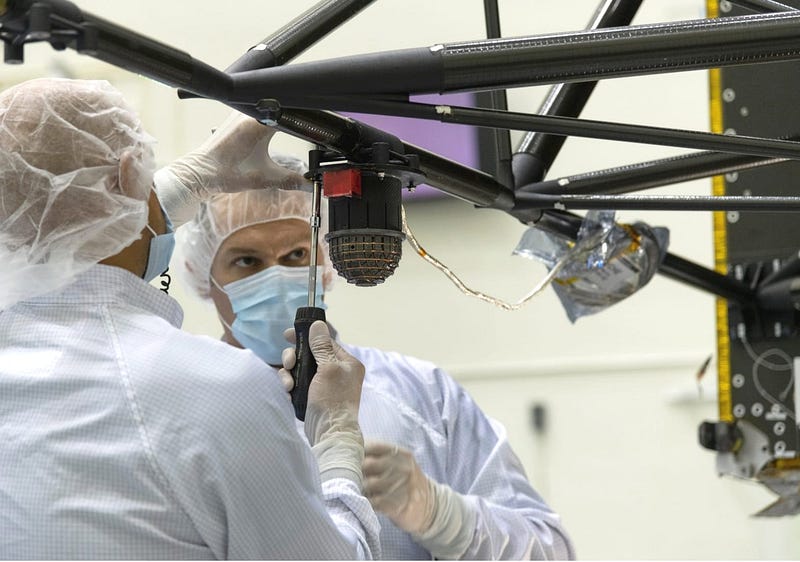NASA's Psyche Spacecraft Embarks on a Journey to a Metal Asteroid
Written on
Chapter 1: Launch of the Psyche Mission
Last week marked a significant milestone as NASA launched its Psyche spacecraft, initiating a six-year expedition to the metal-rich asteroid Psyche. This mission aims to investigate an asteroid comparable in size to Massachusetts, believed to be the remnants of a small planet's core that was destroyed in a collision during the early solar system's formation.

Psyche successfully lifted off on the morning of October 13th after a weather delay postponed the initial launch scheduled for Thursday. Everything proceeded smoothly, and mission control received a signal from the spacecraft shortly after launch. The Psyche spacecraft was carried into space by a SpaceX Falcon Heavy rocket, whose two reusable boosters returned to Earth and will be utilized for NASA's Artemis II mission, which aims to send four astronauts into lunar orbit in late 2024.
Section 1.1: The Significance of Psyche
Psyche stands out as a unique metal-rich asteroid situated in the asteroid belt between Mars and Jupiter. Discovered in 1852 by Italian astronomer Annibale de Gasparis, it carries the name of the goddess of the soul from ancient Greek mythology. Scientific assessments suggest that Psyche may contain between 30% and 60% metal by volume. Although it hasn't been directly photographed, radar observations have allowed researchers to estimate its shape and composition.
NASA has prioritized studying Psyche to gain insights into our own planet. This asteroid is one of only nine known metal-rich asteroids, and it is by far the largest. Scientists believe Psyche may be the exposed core of a small planet that was fragmented during the solar system's formation. By exploring Psyche, researchers hope to better understand the metallic core of Earth, which remains inaccessible for direct study.

Psyche is equipped with a variety of scientific instruments, including a magnetometer designed to detect any signs of a previously active magnetic field on the asteroid. Active, molten planetary cores generate detectable magnetic fields, much like Earth's magnetic field, which can be measured using a simple compass. Additionally, the spacecraft is outfitted with gamma-ray and neutron spectrometers to map Psyche's chemical composition, allowing scientists to ascertain its material makeup without landing on its surface.
The spacecraft also features a multispectral imager that will capture detailed images of the asteroid's surface throughout its 26-month mission. This dual-camera setup will enable Psyche to differentiate between metallic and silicate materials on the asteroid's exterior.

NASA has termed this period “asteroid autumn” as exploration of the solar system's smaller bodies continues. Just two days prior to Psyche’s launch, NASA revealed its first-ever sample return from the near-Earth asteroid Bennu. The probe responsible for this groundbreaking achievement is now on its next mission to study another near-Earth asteroid, Apophis. Furthermore, NASA's Lucy probe, named after the Beatles song “Lucy in the Sky with Diamonds,” is set to make its first asteroid flyby in November before proceeding to investigate the Trojan asteroids orbiting Jupiter.
“As we journey through Asteroid Autumn, NASA remains dedicated to uncovering the mysteries of the universe and inspiring global curiosity through exploration,” stated NASA Administrator Bill Nelson.
For the initial 100 days in space, Psyche will undergo a comprehensive systems check to ensure all components are functioning as intended. Following this, the Psyche team will test all instruments and calibrate the imager while the spacecraft continues its journey toward the asteroid belt. It will take Psyche six years to reach its target, where it will commence an extensive 26-month survey of the asteroid.
Chapter 2: Psyche Mission Videos
In this official NASA broadcast, viewers can witness the exciting launch of the Psyche spacecraft as it embarks on its monumental journey to explore a metal-rich asteroid.
This video highlights the launch of the Psyche mission from Kennedy Space Center, showcasing key moments and insights from this historic event.